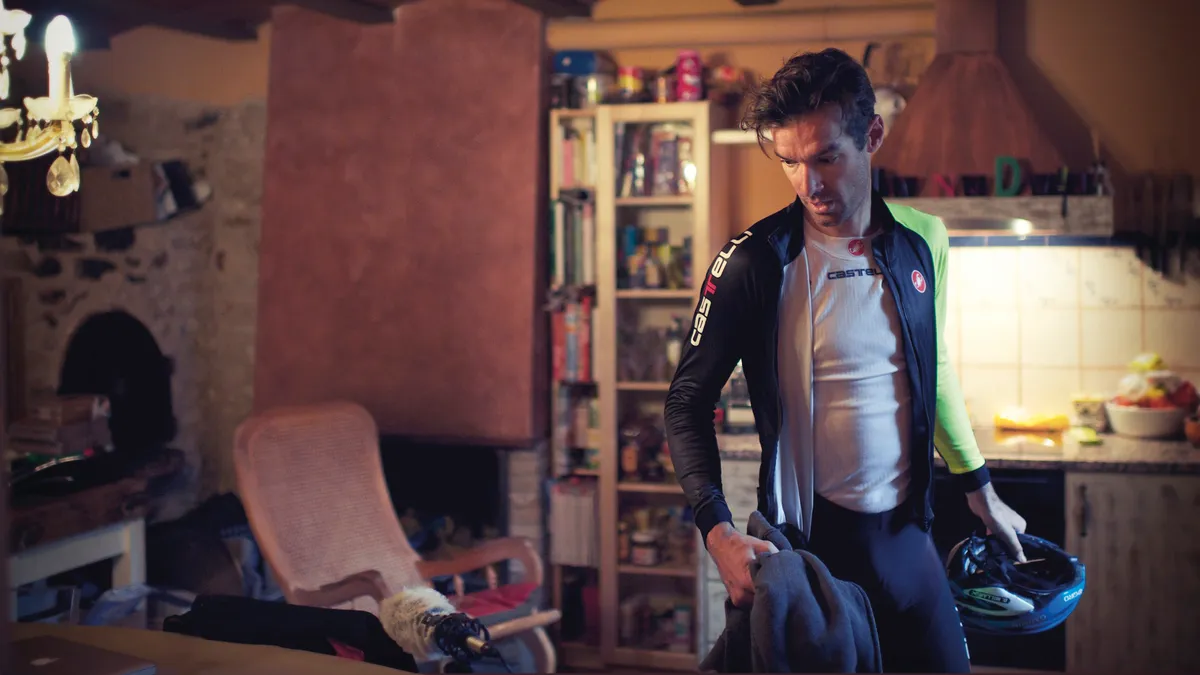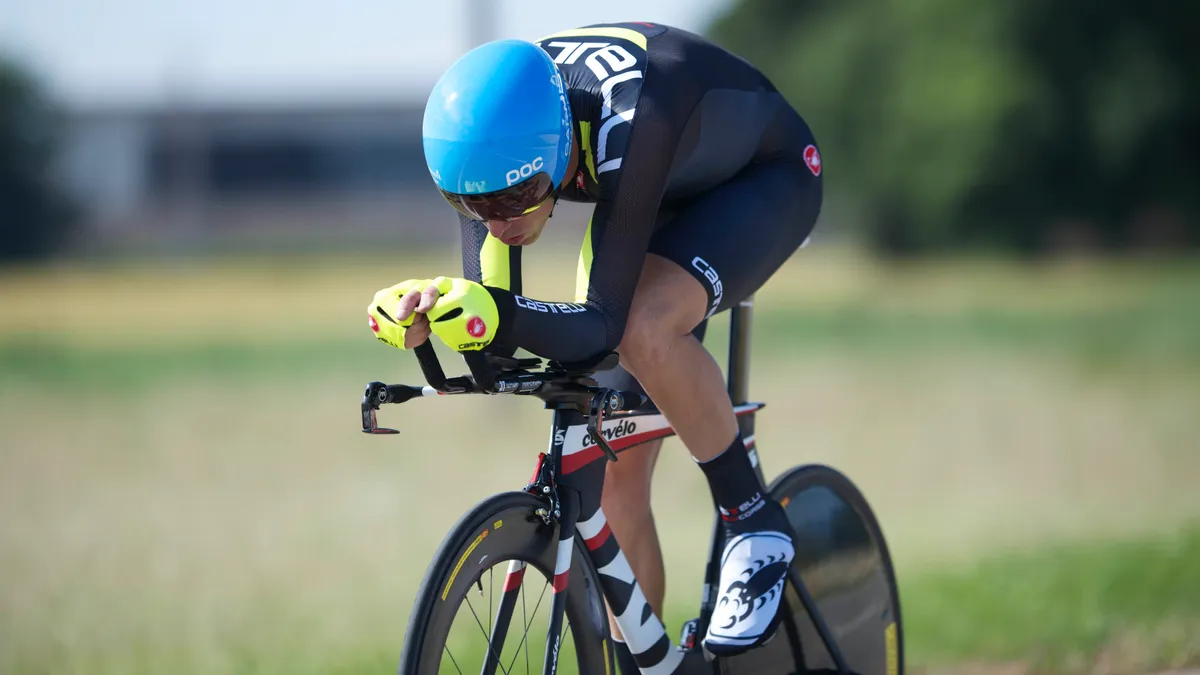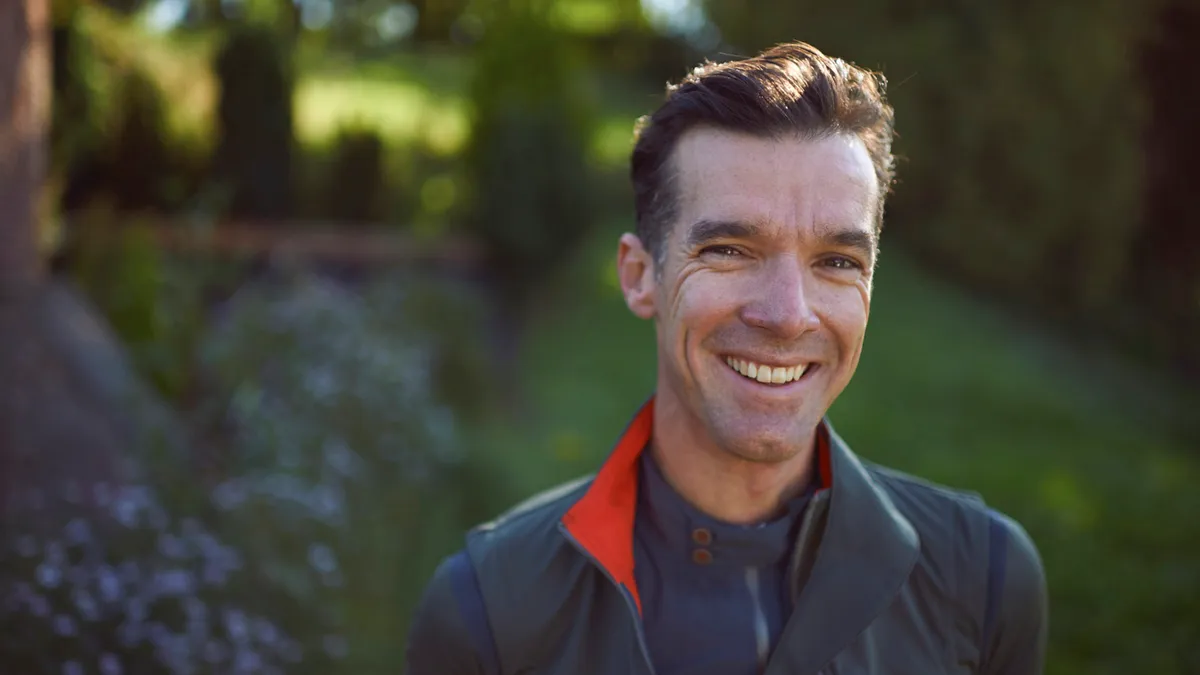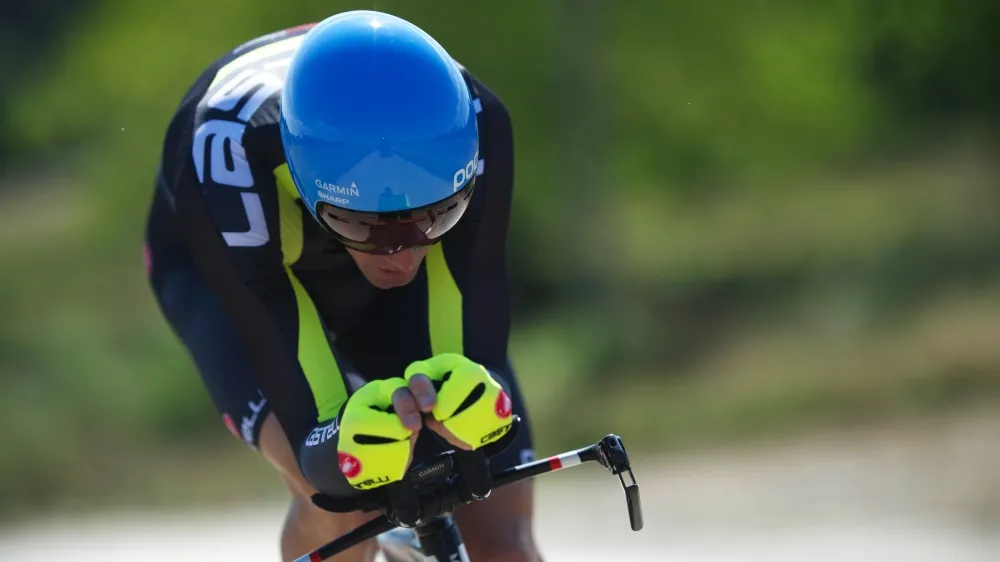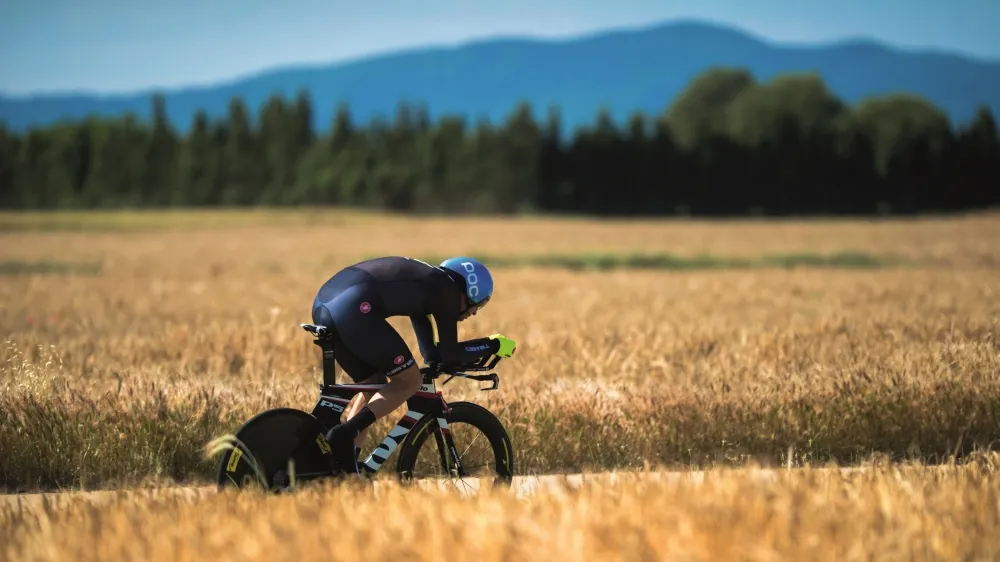This is a promoted post in association with David Millar and A1 Members.
The ‘David Millar TT System’ gives a roadmap to all riders on how to improve their time trialling. The system isn’t a strict set of rules on how to do it ‘right’, or an argument for purchasing an expensive list of equipment. Because every rider is unique, Millar’s system reveals how everybody can unlock their full potential and become the best time triallist they can possibly be.
In today’s post I am going to talk about how equipment choice can improve your speed.
One of my favourite things about time trials is the amount of equipment available – I’m a bit of a tech geek really. It usually starts off with quite basic additions to a road bike and can end up with a full TT bike with almost unlimited custom options.
Searching out new trick stuff for that ‘marginal gain’ and staying up-to-date with the latest technical developments can be very interesting, especially for those with a strong analytical and technical bent.
Some riders just love this and spend endless time talking about and analysing the latest gadgetry. This gives an added dimension to the sport for some and can become quite an addiction
However, it can also get very expensive and, before forking out loads of money, there are a few simple things you can begin with.

Keep in mind that the margin of improvement provided by gear increases exponentially with your speed. For example, a rider doing under 25mph (40kph) will derive far less benefit – perhaps very marginal – compared to riders going faster than that.
Also remember what I said in yesterday’s post about position: your body offers by far the biggest resistance to air and speed, so an efficient position is infinitely more important than aerodynamic equipment. And, of course, the size of your engine does matter!
So, prioritise your position (Element 1) and your training (coming in Elements 4 and 5) above equipment.
null
Make your body slippery
As I already mentioned in yesterday’s post, clip-on aero bars are the best way to start if you don’t have a TT bike as it’s the only way you can get into a really good aerodynamic tuck position on a road bike.
Therefore, before talking about additional equipment for the bike I’d like to continue focusing on the body because of its prime importance in creating resistance and decreasing speed.
It’s obvious that the size of the frontal area presented to the wind will affect speed, but another drag that people should keep in mind is air turbulence. This occurs as the wind passes over an object, and turbulence is increased by irregular shapes. The more turbulence, the more drag and less speed,
The drag also increases exponentially with speed. So, after making the body smaller as it is presented to the wind, we also want to minimise the turbulence it creates – we want to make it ‘slippery’ through the air.
So, forget your usual wrinkly kit and commit to a skinsuit, or what we more commonly call a speedsuit these days. The bottom line is that no matter how good your position, you are slowing yourself down if you’re not wearing streamlined kit.
These have been constantly developed over the past few years with manufacturers regularly innovating with materials and cut. Personally I’ve worked with Castelli most closely and find their speedsuits to be the best out there.
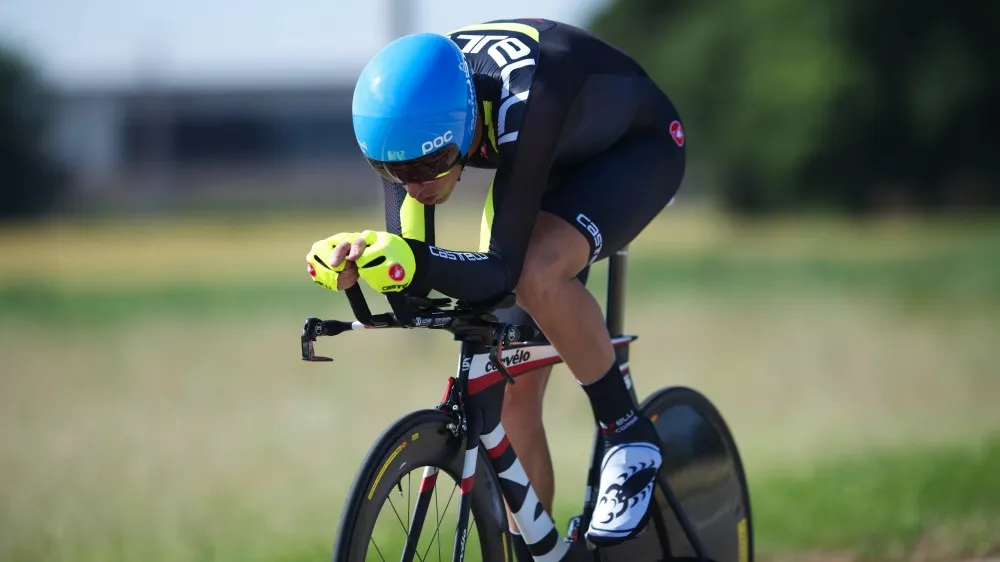
I will warn you that the first time you wear a good speedsuit you’ll feel a bit weird, if they fit properly that is. It should be difficult to get in to and so tight that it’s difficult to stand up straight – the cut should fit perfectly when you’re bent over in your aero-position, and not when you’re walking around the house (which, please don’t do, because you’ll look ridiculous!).
Shoe-covers are also a good addition for the same reasons, although far less critical as it’s arguable just how much difference they make,. But they do make you feel faster and, as you’ll be looking at your feet a lot, they are a great mental addition if nothing else. Again, these need to be very tight, and don’t be scared of a bit of weight if it’s better aerodynamically.
Then there is the last, yet one of the most important elements to making the body slippery: the TT helmet.
Your head creates a lot resistance (if in doubt, stick your head out of the passenger window of a car at 25 mph – safely please! – and feel the enormous ‘push’ the wind creates on it). Even if you can get your head tucked fully down on the bike it still creates turbulence and drag. A good helmet will help eliminate both.
As I discussed in my previous article about the ‘best’ position, you shouldn’t go looking for the ‘best’ helmet, but find the helmet which fits your particular position the best. My style is to keep my head tucked in and, in the early part of my career, I adapted my position to accommodate the ‘best’ helmet – I lifted my head so that the long tail sat horizontally across my back rather than sticking vertically up into the wind.
However, this was an unsatisfactory compromise as this wasn’t the best position for me, Later in my career our resident science genius at Team Garmin, Robby Ketchell, designed a helmet that fitted my particular position. He made it into a stubbier, less elongated affair. It didn’t figure in the ‘Best TT Helmet’ reviews in the magazines, but it made me go faster.
Fortunately, nowadays there are so many different helmet designs to choose from that you can more easily find a good fit for your head position.
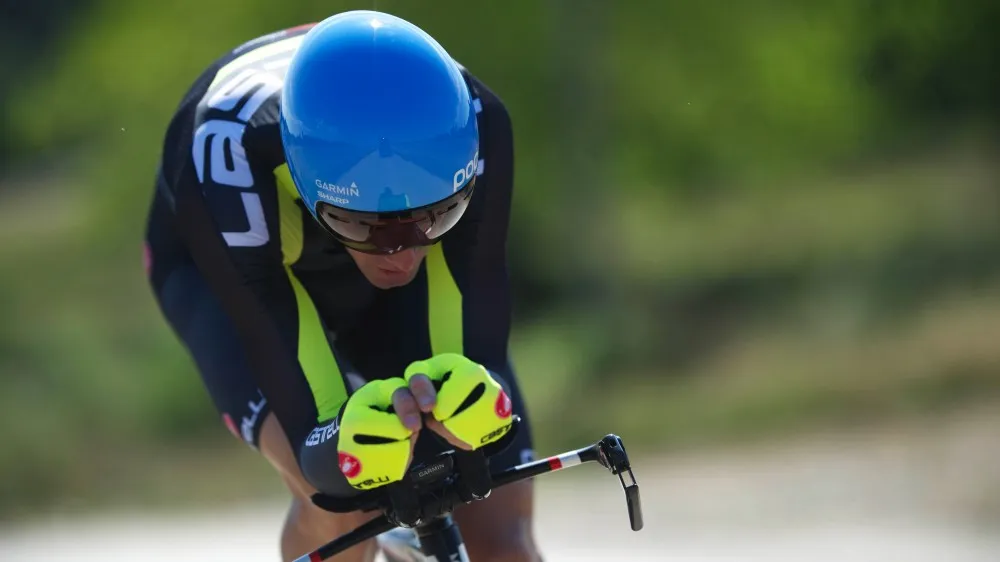
So, the most important thing about helmets, and I will keep repeating it, is to find the one that makes you fast by best streamlining your position. For example, go back to the strategies I outline in the previous post about overall position – take pictures, study and adjust.
Beyond making the body slippery, what are the other areas for gain?
Seek further gains from the little things
After selecting gear which reduces the aerodynamic drag on the biggest air resistance – the body – it’s time to look at further areas for more marginal gain.
Most people don’t think much about lubricant when it comes to speed, but the role of lubricant is to reduce friction in moving parts – and lost power – and it’s obvious that more efficient lubricant reduces that loss of power.
You can do a simple test: if you take a cheap or poorly maintained wheel and turn the axle spindle with your fingers, and compare to a top end wheel, you’ll notice a great difference in resistance.
One part of your bike with a lot of moving parts is the chain, so buy a new chain and degrease it as the lubrication it leaves the factory with has a high viscosity in order to last longer. Once the chain is degreased, oil it with a low viscosity oil that contains PTFE.
If you want to go full geek you can do the same to all your bearings but this treatment is not long-lasting, so save it for the big target events and then replace everything once more with higher viscosity products.
Wheels and tires are the next thing to consider. In a dream world you’d have a rear disc – apart from the hilliest of events it’s the fastest option when you start developing some real speed. In fact, in a world without wind you’d use two discs, front and rear, which is exactly what they do in the velodrome for the team pursuit.
A rear disc on the back does two things: it reduces turbulence massively and also acts like a sail in crosswinds, pushing you forward.
With front wheels it’s best to go for deep section or even tri-spoke. I’d run as deep as the Zipp 1080, although if I’d had the option of a tri-spoke I’d have used that. However, one of the downsides of being a professional is that we don’t always get what we want and have to use our sponsors’ products.
Of course, you must be aware that the more deep-section your front wheel the more likely it will be susceptible to turbulence, especially in crosswinds – which can sometimes be a little hairy!
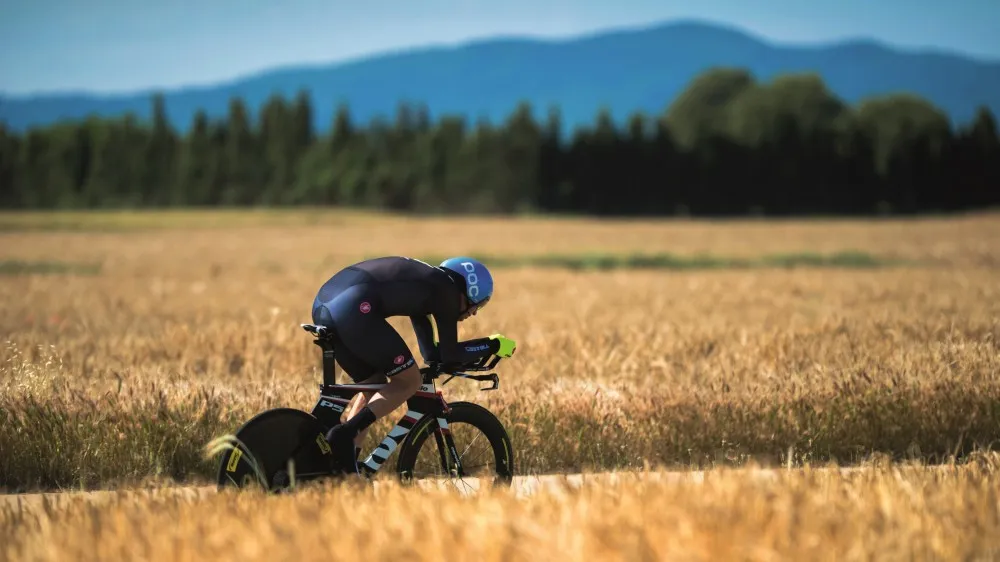
Make the right tyre choices
There are two schools of thought on tires. In the past tubulars were king but recently it’s been proven that certain modern clinchers are actually faster.
Personally I always raced on tubulars and even sourced my own, buying them from FMB or Dugast. Silks were a favourite of mine because they had a lower rolling resistance and could be ridden at a higher pressure without losing their feel because of the suppleness of the side walls.
It is worth investing in tires that have been designed for racing rather than for the daily commute as they’ll be lighter and have a lower rolling resistance: don’t underestimate how important this is.
A common mistake many make is to think the narrower the tire and the higher the pressure and the faster you’ll go. This is not the case: often a 23mm tire with 8-9bar is about as fast as you can get.
Also, if you are racing in wet conditions it’s important to drop the pressure a little bit as this will give you better traction.
So, for a start at least, you can gain speed with your regular wheels by ensuring the bearings have least resistance, that they are clean and have fast racing tires.
With all of the suggestions above about equipment, I hope I am getting the point across that the best results will come from you making adaptations for your circumstances, and understanding the reasons why. These basic equipment modifications, put together as part of the overall system, will give you more speed than just throwing money blindly at expensive gear.
As time goes on and if you find yourself becoming a true "tester", you’ll find yourself constantly searching out new bits and pieces until you may even get to the point of investing in a dedicated TT bike, or upgrading part of your TT bike if you already have one.
However, like the last post when I explained that the best TT position is dynamic and changeable dependent on the course, the same applies to equipment. So, please check back for the next post when I delve into this in Element 3 of The System – Course Recon and Pacing.
With numerous Grand Tour stage victories and the leader’s jersey in all three, David Millar has to have a great deal of knowledge on how to become a great bike racer. Now retired from the professional game, David has taken time out to describe the time trial system he developed over the course of his career and shares it in his ‘David Millar TT System’. Produced in conjunction with A1 Coaching, there is something in this for all riders, along with added insight in the associated free 4-Part Video Training Series.
